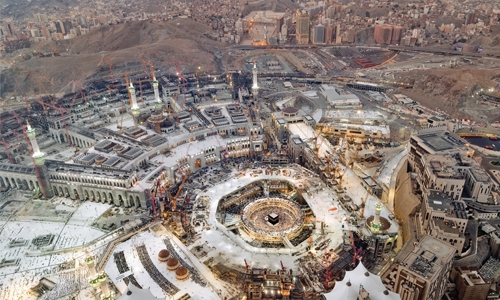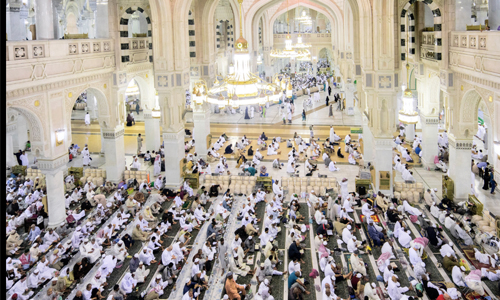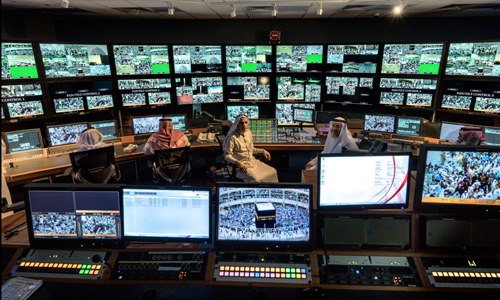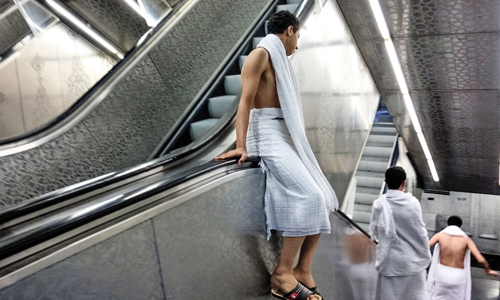MECCA GOES MEGA
In the days before rapid sea or air travel, it could take months to travel to Mecca. The spiritual heart of Islam lay far from its great capitals in Istanbul, Delhi and Isfahan. The devout came from distant lands on foot, by camel and in horse-drawn carriages. Bedouin tribes routinely robbed these pilgrims, who were the primary source of revenue for this ancient desert town.
Now, the ease of air travel and the rise of a global Muslim middle class have made the journey to Mecca far less arduous and far more common. Last year, three million came for the Hajj, a pilgrimage in the last month of the Islamic lunar calendar that is considered obligatory for every Muslim who can afford it; five million more came for the umrah, a minor pilgrimage that can be made for much of the year. And millions of Saudi citizens routinely pass through Mecca’s sacred sites as tourists.
The Italian photographer Luca Locatelli, visiting Mecca this year during the umrah period, captured how radically the city has changed to accommodate this growing influx of pilgrims. Until the first half of the 20th century, this was a small city of spacious stone houses famed for their mashrabiyah, or latticed windows and balconies.
Five hills known as the rim of Mecca encircled the Grand Mosque and the Kaaba, or House of God, located in the city centre. Today, all a visitor would recognise from older images of Mecca are the Ottoman domes of the Grand Mosque, its minarets and the Kaaba.
The ancient hills, the old stone homes and many of the sites linked to the life of the Prophet Muhammad (PBUH) have been obliterated by towering shopping malls, hotels and apartment blocks.
It is a transformation that has been underway since the late 1970s, when Saudi monarchs to devise an ambitious plan to replace earlier Ottoman structures and to expand the Grand Mosque and its surroundings with Arab-style architecture. At a projected cost of $26.6 billion, the Saudi Binladen Group has led the efforts to increase the capacity of the Grand Mosque, adding new wings, prayer areas, escalators and hundreds of bathrooms.
Before his death in 2015, Saudi King Abdullah ordered the installation of the world’s largest folding umbrellas in the piazzas outside the Grand Mosque, to shelter worshipers from the blistering sun as they offered prayers, read the Quran or simply basked in their proximity to this holy site.
His successor, the Custodian of the Two Holy Mosques, King Salman bin Abdulaziz Al Saud, announced plans to build a ring road, subways and intercity trains to accommodate millions of worshipers. One of Locatelli’s photographs looks as if it were taken from the air, but it was actually shot from one of the highest points of the Royal Mecca Clock Tower, which houses a hulking hotel and shopping complex a few hundred meters from the gates of the Grand Mosque — 46 times taller than the Kaaba and crowned by a clock five times the size of Big Ben. Throughout the history of Islam, no other ruler built in such proximity to the Kaaba; certainly none built anything to dwarf it. In luxury hotels like the Fairmont Makkah Clock Royal Tower and the Raffles Makkah Palace, views of the holiest site of Islam are marketed as the “Haram view” and “Kaaba view,” and a standard room can run anywhere from $1,500 to $2,700 a night during the hajj.
Related Posts




